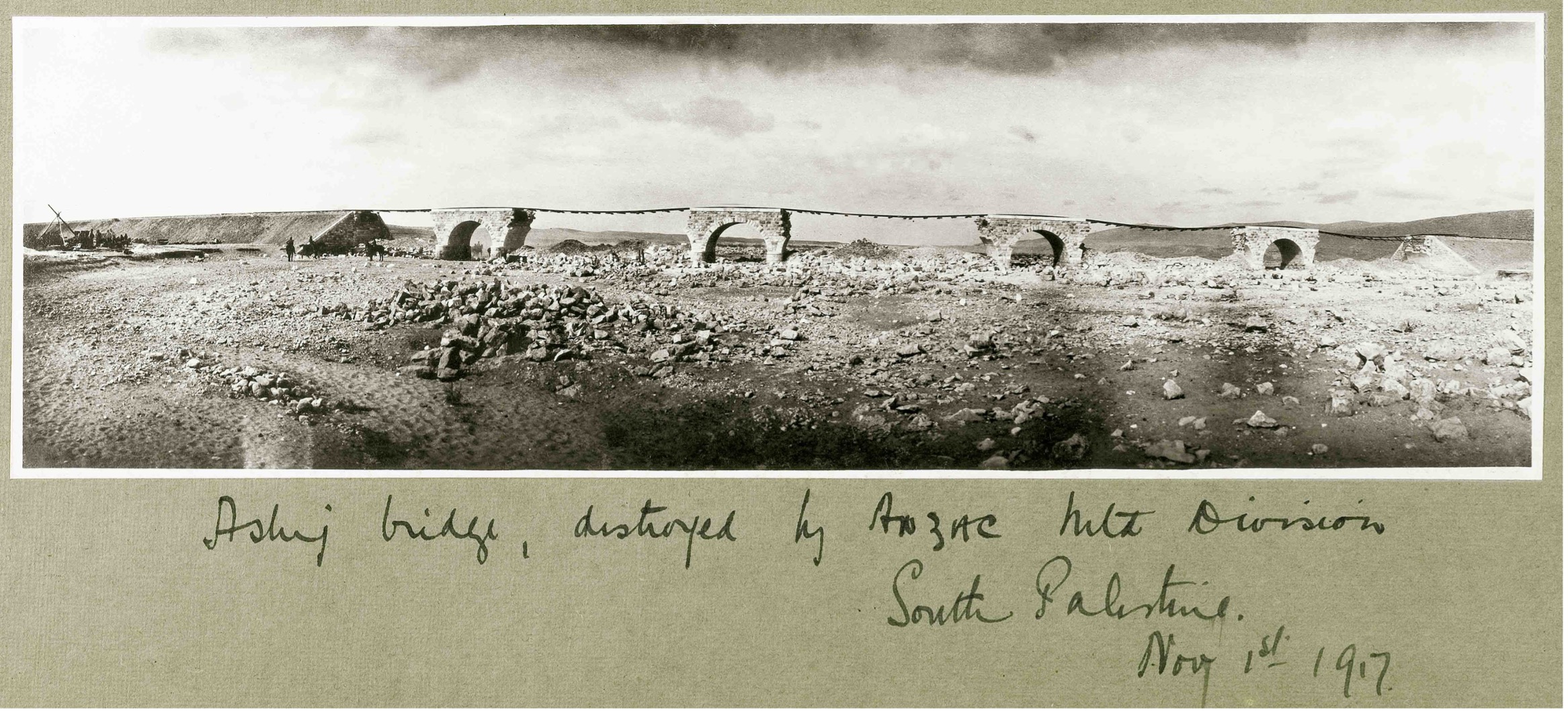Sculpture: bronze bridges and 30 metres of bobbin lace made from the artist’s hair. Video of various making processes with audio essay.
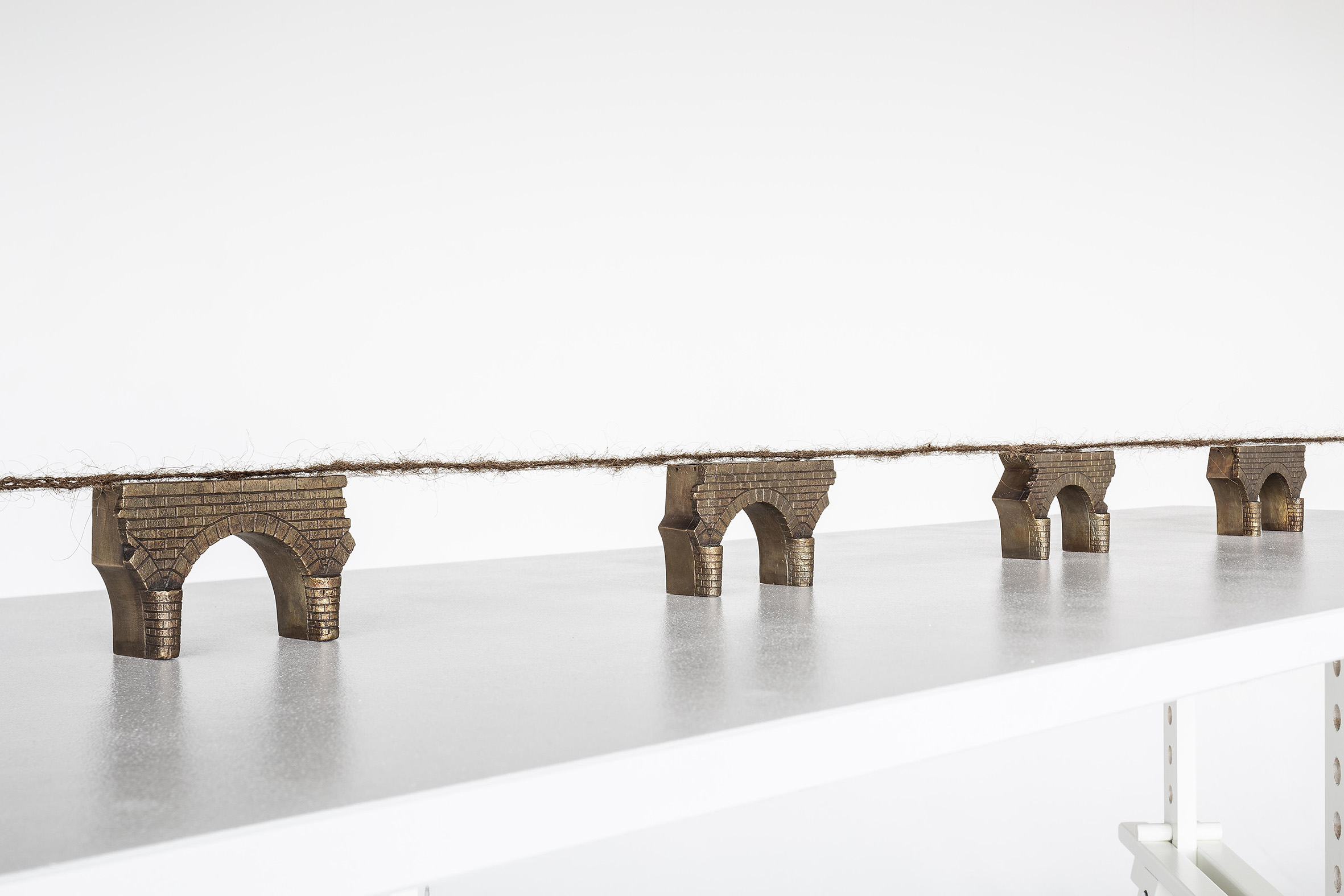
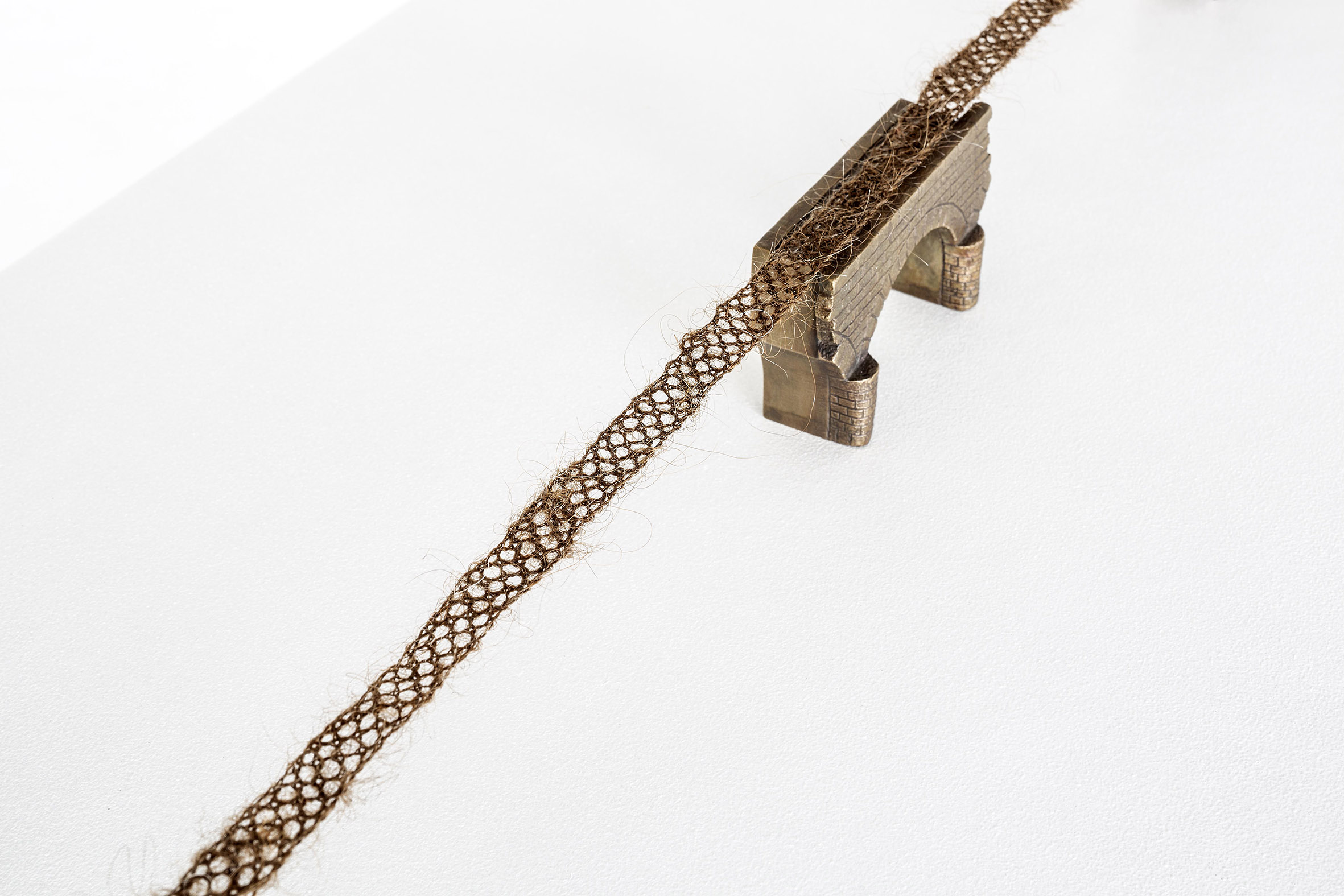
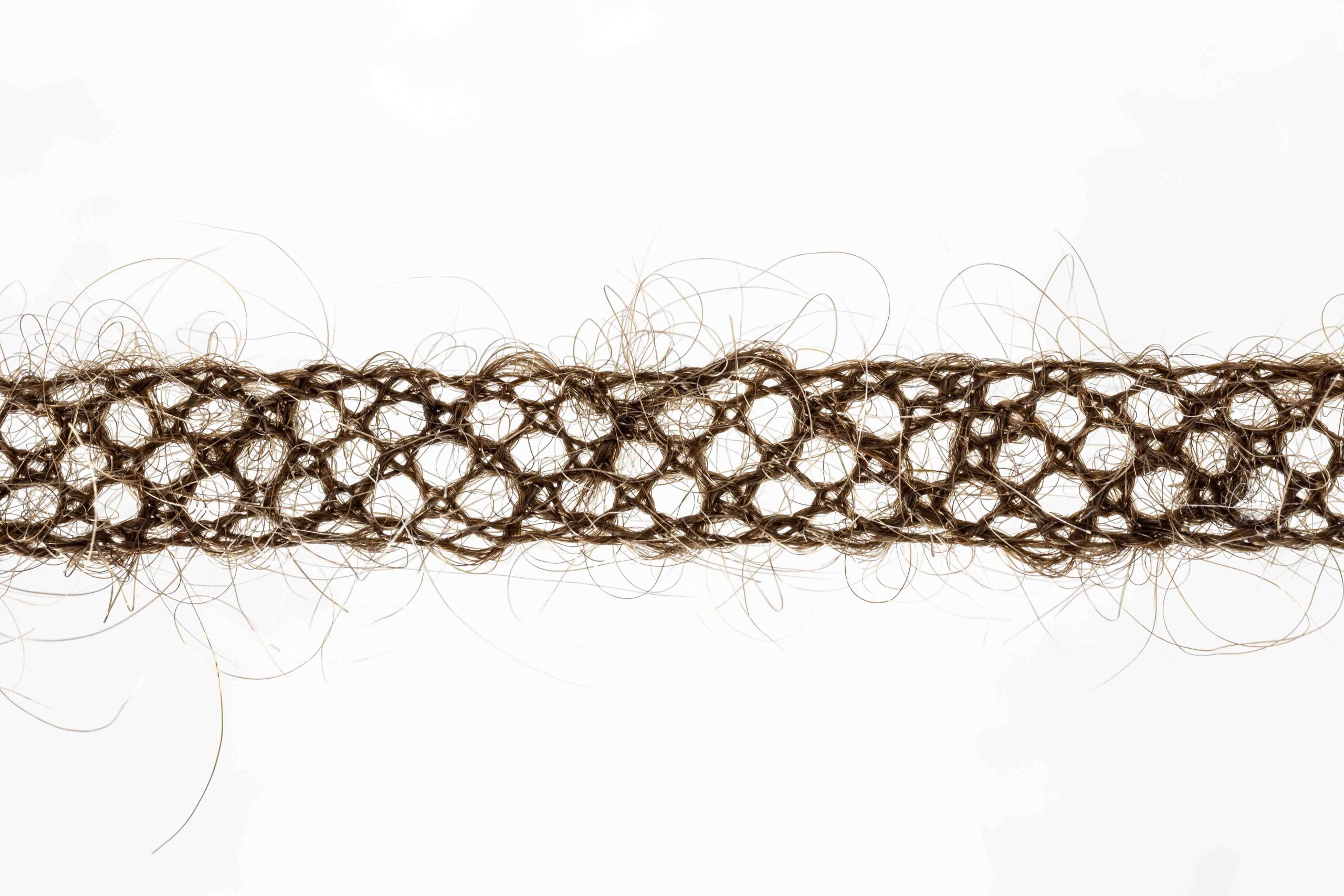
How to Make a Miniature of the Demolition of the Eighteen Arch Ashlar Bridge at Asluj, First World War, 1917 is a durational autotheoretical suite of artworks undertaken by Cat over a period of five years: a sculpture cast in bronze and made with bobbin lace woven from the artist’s own hair, and a time-lapse video essay that follows the creation of the sculpture. Autotheory describes the practice of joining critical theory with autobiographical experience. This subverts the power dynamics of traditional modes of theorising by incorporating the wisdom of those from outside of the established academic canon, such as friends or oneself.
Cat has engaged in over a decade of artistic research regarding the Anzac legend, and this suite of artworks interrogates the sense of dissonance she feels when experiencing representations of the Anzac legend and it’sreinscription back into contemporary culture. “I struggle to see myself reflected in these historic tales of conflict that have shaped our collective memory and national identity.” This sense of dissonance has compelled Cat to find a different approach to the forms of nostalgic reenactment and material languages of commemoration typical of Anzac memorial.
How to Make a Miniature of the Demolition of the Eighteen Arch Ashlar Bridge at Asluj, First World War, 1917 uses as its starting point, a photograph from the Rhodes Collection of the Palestinian Exploration Fund (UK) of a bridge demolished by Anzac troops in South Palestine during WWI. Cat first encountered this image in 2013 during her research for The Horses Stayed Behind, her award-winning WWI centenary project, eventually exhibited throughout Aotearoa.
The bridge had been demolished by an Anzac demolition party at Asluj, Palestine in 1917 during the Sinai and Palestine Campaign of WWI, and the image of the monumental ruins became an important thinking-companion for Cat. This image captures one of many Anzac tales of daring and adventure which exemplify Anzac character traits bequeathed to contemporary Aotearoa New Zealand: masculine stoicism and understated resourcefulness.
This defining narrative is complicated by Cat’s experience of presenting The Horses Stayed Behind at a conference in Jordan in 2018:
“I had become used to travelling on an Aotearoa New Zealand passport and being welcomed wherever I went internationally. But this time, for the first time, I was told that Aotearoa New Zealanders are not popular in Jordan because ‘we’ were the foot soldiers who helped implement the British Mandate in the region, resulting in decades of unrest in the Middle East. This ran counter to the narrative I had grown up with: that Aotearoa New Zealanders have only had a positive influence on international events.”
By regularly filming herself sculpting the scene at Asluj, including her own voice and stories within the film, using her hair as material, and casting the traditional commemorative material bronze at a domestic rather than monumental scale, Cat uses her artistic materials and processes to theorise what it would be like to experience herself within an Anzac narrative. In this way she autotheoretically questions how her own national identity operates from an international position, both as an antagonist when positioned within Jordan, and as Pākehā whilst living in Scotland and unable to visit ‘home’ during the COVID-19 pandemic.
Cat Auburn (2019–2024). Excerpt: How to Make a Miniature of the Demolition of the Eighteen Arch Ashlar Bridge at Asluj. First World War, 1917. Video essay. 24min 30sec.
Cat Auburn (2019–2024). Excerpt: How to Make a Miniature of the Demolition of the Eighteen Arch Ashlar Bridge at Asluj. First World War, 1917. Video essay. 24min 30sec.
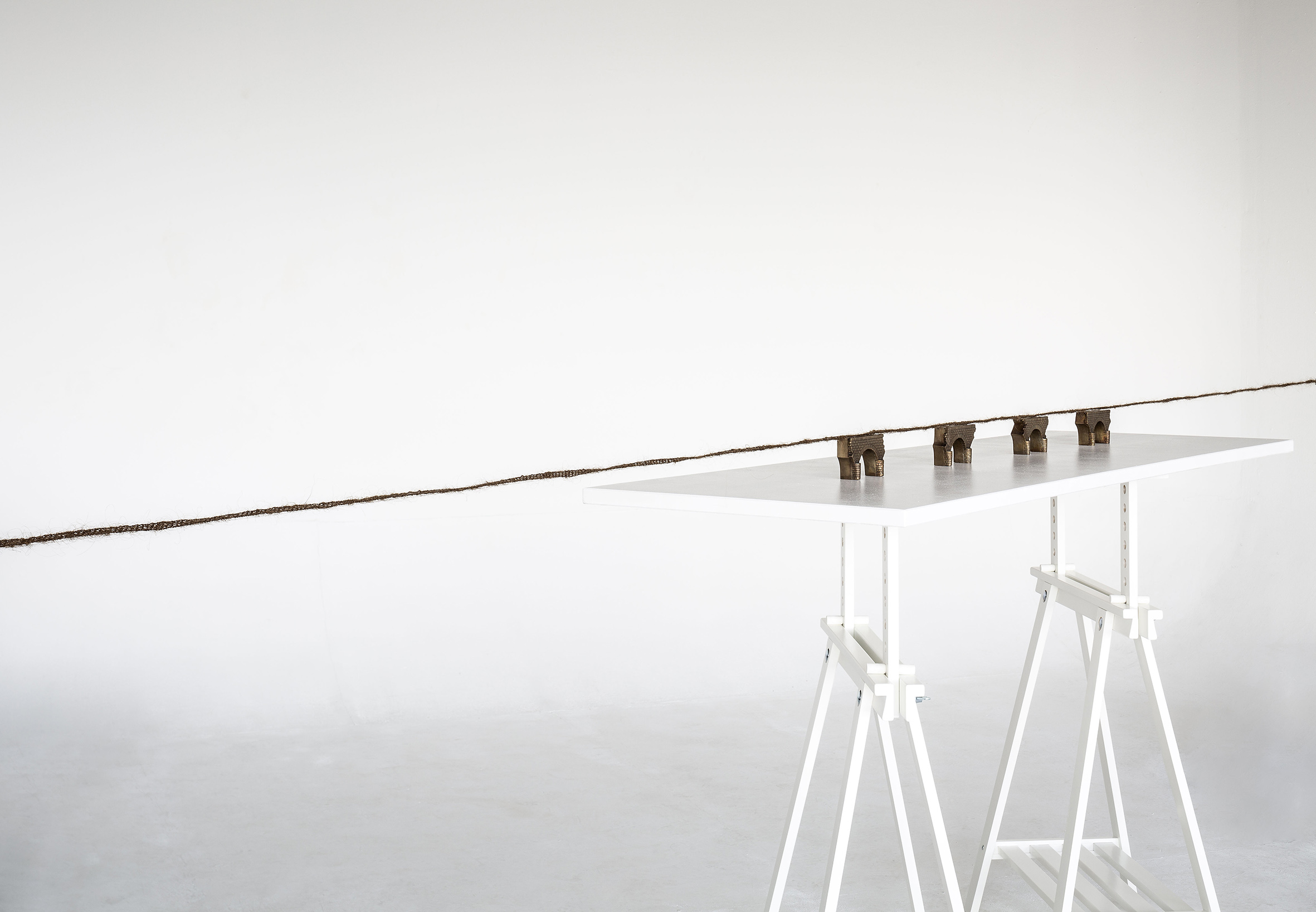
Cat Auburn (2019–2024). How to Make a Miniature of the Demolition of the Eighteen Arch Ashlar Bridge at Asluj. First World War, 1917. Bronze, hair. Size variable. Photos by Keith Hunter.
